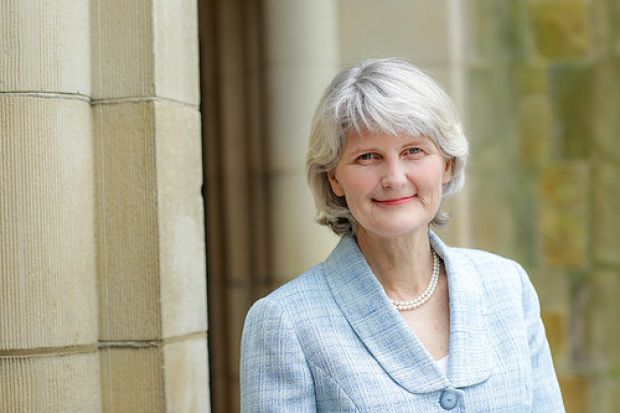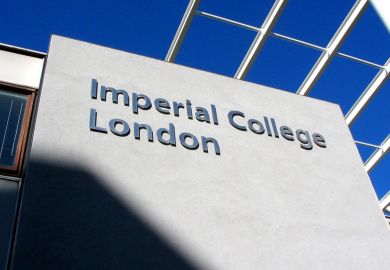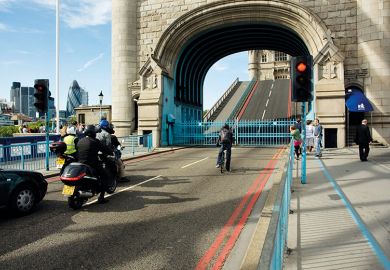For more than 160 years, Vassar College has been honing its brand of liberal arts undergraduate education. Now, under president Elizabeth Bradley, the private college is seeking to globalise the model through a series of partnerships with universities in India, Rwanda, Scotland and beyond.
Vassar is working with the University of Edinburgh on broadening the curriculum and developing a set of multidisciplinary majors, as well as discussing ways to respond to increasing calls for diversity and inclusion.
It has also started collaborating with the Indian Institute of Technology Bombay (IIT Bombay) on academic exchanges; a professor from the institution will come to Vassar to teach data science and society next spring and the plan is for Vassar scholars to head to the Indian institution, too.
Meanwhile, for the past four years, the US college has taught a set of classes in the humanities and social sciences at the medical school of UGHE – University of Global Health Equity in Rwanda – fields that “typically are omitted from a medical school curriculum but are so fundamental to creating a wonderfully inclusive and functioning physician and healthcare system”.
“In all of these, it’s a way to bring together people who are really thinking about the liberal arts in a way that will improve the education of their top institutions, just as ours will be improved by being with them,” says Bradley, during her first trip to Scotland.
“Our goal at Vassar is to have something that we are calling a ‘global collaborative on the liberal arts’. These four institutions are very interesting because they’re all at the top of their fields, they all have a vision of inclusion and equity, which I think really holds us together, and I think they are all willing to challenge the status quo and say ‘how do we constantly improve the curriculum to be truly inclusive and multidisciplinary?'”
Bradley’s hope is that within the next year, all four universities will convene to discuss “what are our commitments to diversity and inclusion, and what are our commitments to opening up as broad and multidisciplinary approach to undergraduate education as we can? And hopefully trade some secrets about how we do this, so that we benefit from each other.”
She anticipates that the global liberal arts alliance will eventually include more institutions, but says that “it’s very helpful to have the depth of relationship you can get when you’re working in smaller groups. Get that to work, understand how do we really benefit from each other, what kind of impacts can we have, and then one can build momentum from there.”
Equitable partnerships
Bradley says that a key rule for Vassar, which started out as a women-only college but became coeducational in 1969, has been to work only with institutions that have reached out to them.
“It is very important in developing these kinds of partnerships to find the institutions that are already motivated to do this and they’re looking for some support - which is different from going anywhere and saying: ‘Look, you need to do this,’” she says. “The institutions ask you, they invite you, and that helps make the relationships more equitable in many ways...We never at Vassar would say we have the answer and we want to tell others.”
In the case of UGHE, the vice-chancellor and chancellor asked Vassar to help it introduce the humanities and social sciences into its medical degrees, while IIT Bombay reached out to Vassar in response to a government drive to consolidate institutions into large, multidisciplinary universities. Last year, IIT Bombay launched a new liberal arts, science and engineering (LASE) programme.
However, Bradley says that the collaborations are mutually beneficial and she has already learned many lessons from the global partners. For instance, while diversity and inclusion efforts in US higher education often to relate to race and ethnicity, she says that at UGHE, there can be more of a divide based on whether people have come from a rural or urban area, whether their parents are doctors or what their religion is.
“The myriad kinds of diversity that exist on any campus come to light when you work in other contexts,” she says. “Perhaps we haven’t put as much effort into that as actually we would be able to.”
But Bradley is not only seeking to share ideas around education and inclusivity to improve Vassar and the other partner institutions; she also has a broader ambition to spread the word about the importance of the liberal arts.
“If we think of the liberal arts as training people how to think critically so that they don’t believe every fake news email they read or tweet they see; if we think of it as developing people’s personal capacity to think: ‘Who am I, and what is inside of me that I can contribute so that I have greater engagement in my work and more ambition for what I can change in the world?’; if we think of liberal arts as imbuing in people confidence that they in fact could make the change that they want to see – that is a tremendous thing to project into the world,” she says.
“Allowing global liberal arts to spread has some really enormous benefits to [creating] a more equitable world and a more peaceful world and a more democratic world. That for sure is an aspiration.”
However, questions have been raised about the likelihood of liberal arts education becoming a global model. In particular, last year’s split of Yale-NUS College – a 10-year collaboration between Yale University and the National University of Singapore – has led some critics to say that the liberal arts cannot survive in Asia.
Bradley believes that the aspiration for the model is still growing: “People see the vision, they love the vision, they want the vision in many countries and continents.” But she admits that it is not an easy model to implement.
“You’re teaching people to question everything. So in countries where that’s more threatening, I think there are threats to [the model],” she says. “But I don’t think they will overcome because I believe at the root people want a better life for themselves and for their communities, they want to aspire and then train people [to] accomplish these goals. They like freedom and inclusion and equity, and I think that’s exactly what this kind of education gives to countries.”
She cites UGHE as a prime example, given Rwanda’s history of genocide.
“To be asked by the government, who oversees this medical school, will you come and will you help our students question everything…They did that because they know if you don’t, if you repress those things, as opposed to you allow people to have some voice, you can end up with truly civil unrest and even genocide,” she says. “I think it’s really interesting that some of the areas that have…seen the most difficultly in political unrest are actually looking at this model to hopefully bring about a more peaceful future among their young adults.”
Community spirit
Bradley’s passion for inclusivity and equity is evident from her work on the Vassar campus, too, and she facilitates a bottom-up approach to creating inclusion on campus. The Engaged Pluralism Initiative has eight working groups on areas ranging from pedagogy to residential life. Each group, which consists of students, academics and administrators, meets weekly or fortnightly to discuss the changes that could be made to make the area more equitable. Ideas that are agreed by the group are then pitched to the senior administration.
“It’s so much better than a top-down, ‘the president says we need to be inclusive’,” Bradley says. “The idea might need governance adjustments, it might need marketing and communications, so those are roles that I can take. But the idea gets formulated from the grassroots, and I think that’s paramount to running a transparent organisation.”
Bradley is an expert in public health; she started her career as a hospital administrator before moving into academia, spending more than 20 years at Yale University. Early on in the pandemic, she was part of New York governor Andrew Cuomo’s re-opening advisory committee, helping draft the guidelines for the re-opening of higher education in the state.
Despite her own expertise, she has taken a collaborative approach to leading Vassar during the pandemic. The senior team established three values – to protect the most vulnerable, to promote equity and to pursue its mission as a residential liberal arts college – and then created Vassar Together, a front-line group of about 35 people on campus. Made up of students, academics and administrators, the group discussed how the institution could achieve those three values and devised an implementation plan.
“This made a huge difference for us because I knew when I was publishing the implementation plan, I already had this front-line group who had pressure-tested it and they had already worked through the resistance. If someone resisted, I would say: ‘Well, Vassar Together went through that and here’s why they thought this was better even though it’s not perfect,’” she says.
At a time when many US colleges and universities went remote, Vassar quarantined the campus instead, implementing a system of regular testing. Students were not allowed to leave the campus (Vassar has the advantage of being spread over 1,000 acres, or 405 hectares), so services were brought to them instead. The university got an ice-skating rink and fire pits, so students could eat outside in the evenings.
Bradley says it was clear early on that the university needed a credo for the community to live by and it came up with “we precedes me”. The students “really bought it”, she says, even producing T-shirts emblazoned with the slogan. It is a principle she believes may stick in the long term.
While Bradley says that there are “very large differences” between running a hospital and a university, one aspect of hospital administration that she would like to see more of in higher education is a willingness to help and engage with others, no matter their views or background.
“When you’re in medical care or public health, your obligation is to help that patient in front of you, whether they threw the bomb or they were a victim of the bomb,” she says.
“That’s not exactly how I think our society at large works. That obligation is very unique to healthcare and public health, and I’d like to see that broaden out. Because we should be able to teach anybody. We should be able to teach from a perspective of shared governance, of where we are trying to listen to every voice and advance that student forward.”
She adds that “sometimes universities can get a little political” but they must do more to “cross these divides”.
“That’s one reason why I’m really eager to do our inclusion work,” she says. “The way to cross the divide is to say: ‘We educate everyone in the same way; we’re not biased against some perspectives.’ And I think education can learn a lot from healthcare on that.”
This is part of our “Talking leadership” series of 50 interviews over 50 weeks with the people running the world’s top universities about how they solve common strategic issues and implement change. Follow the series here.




